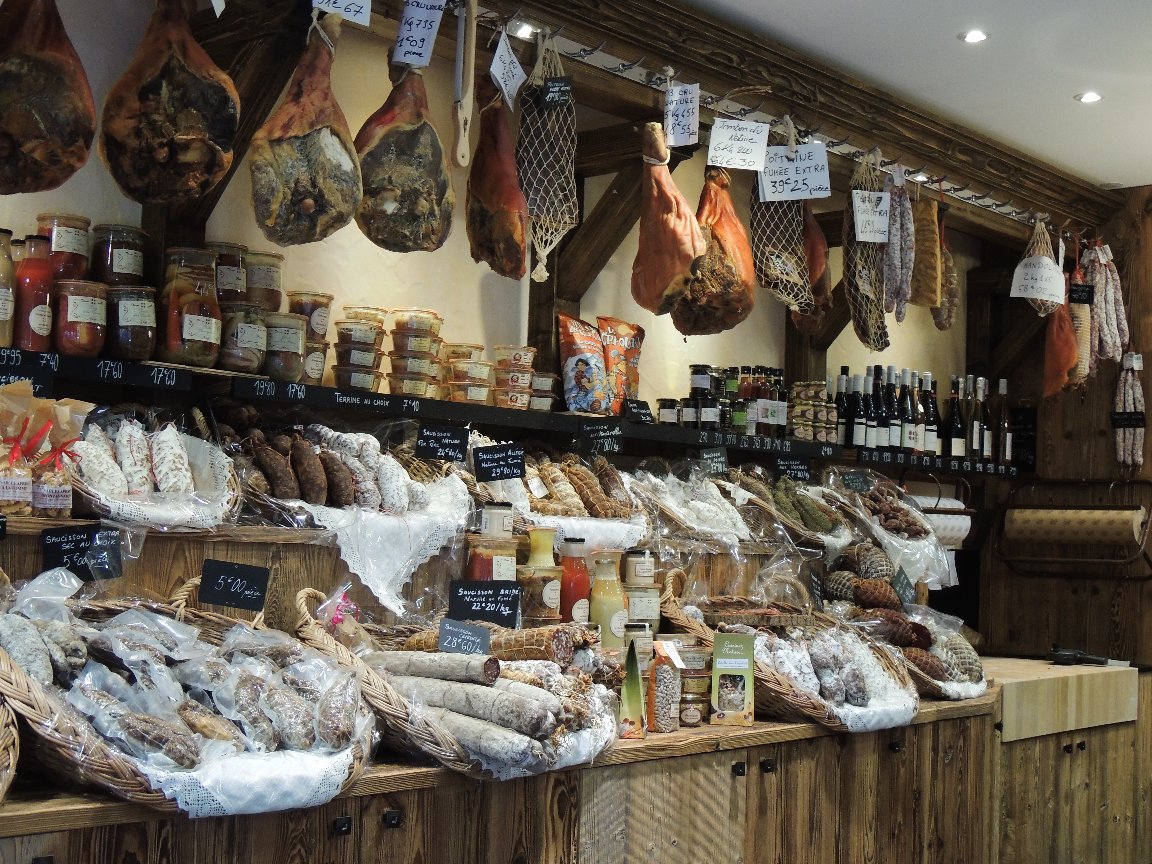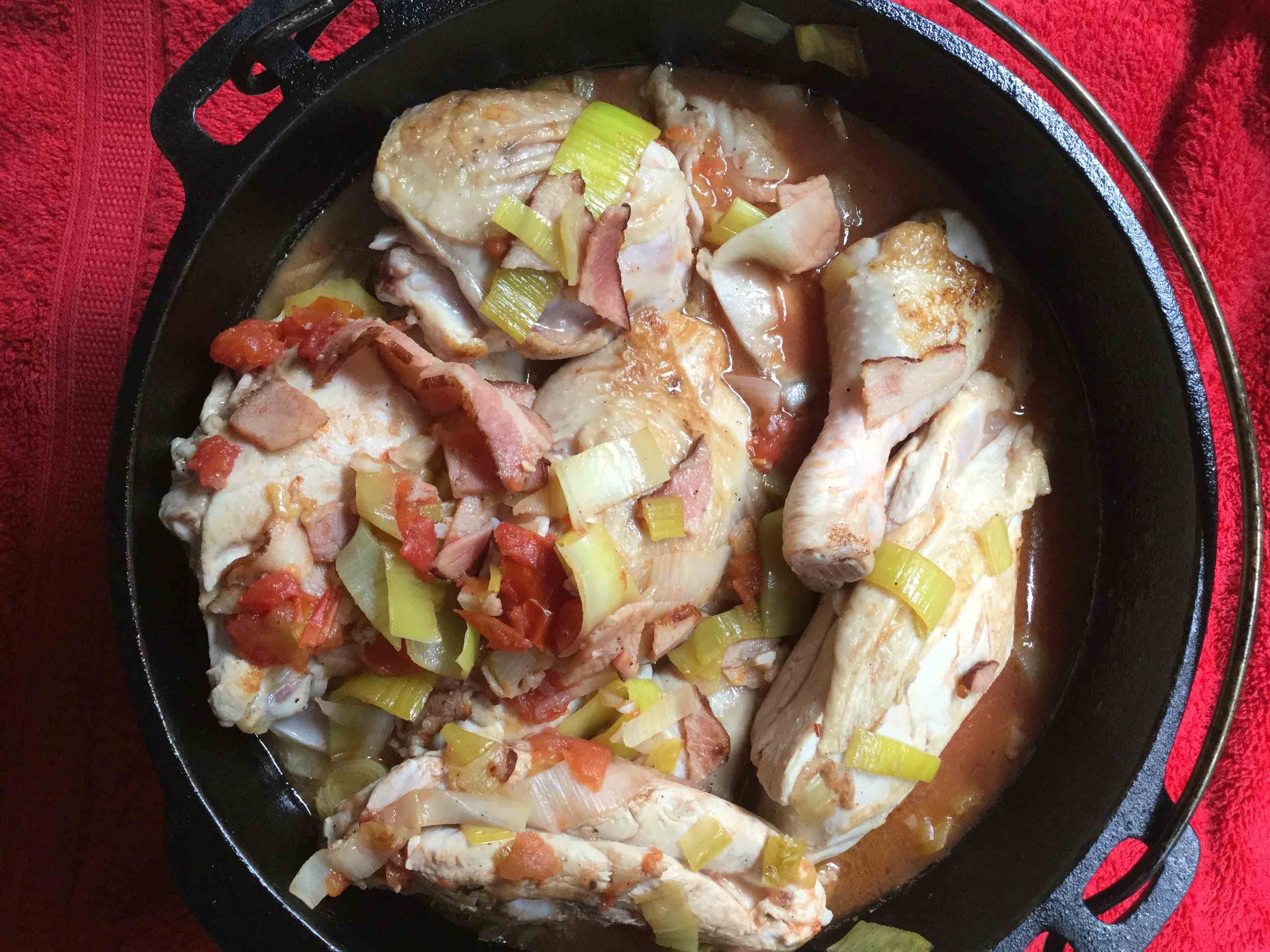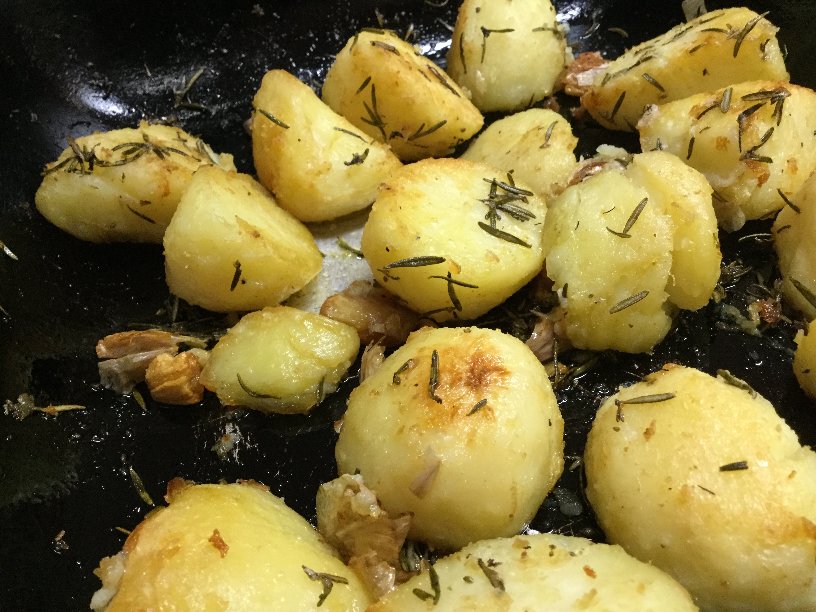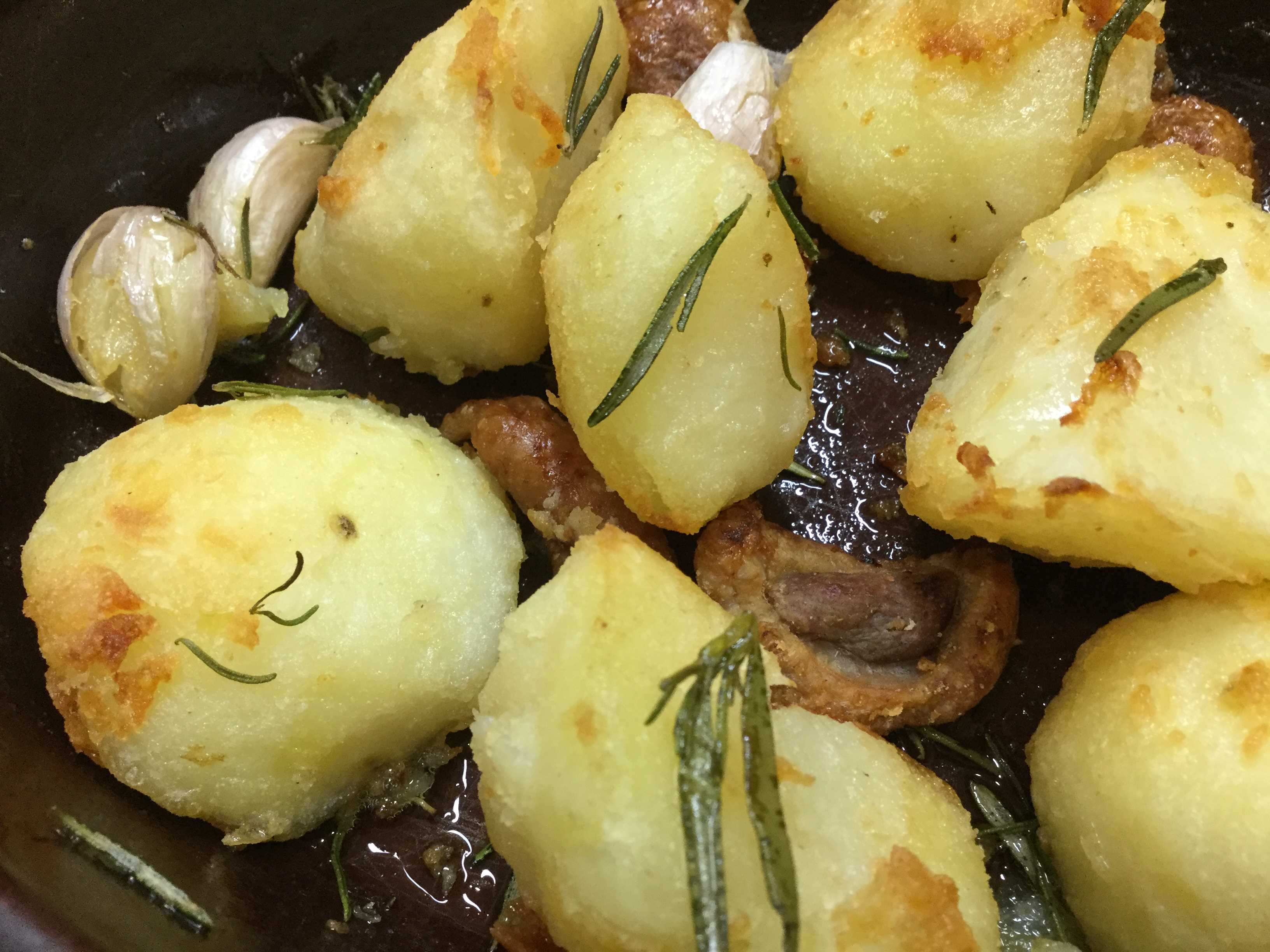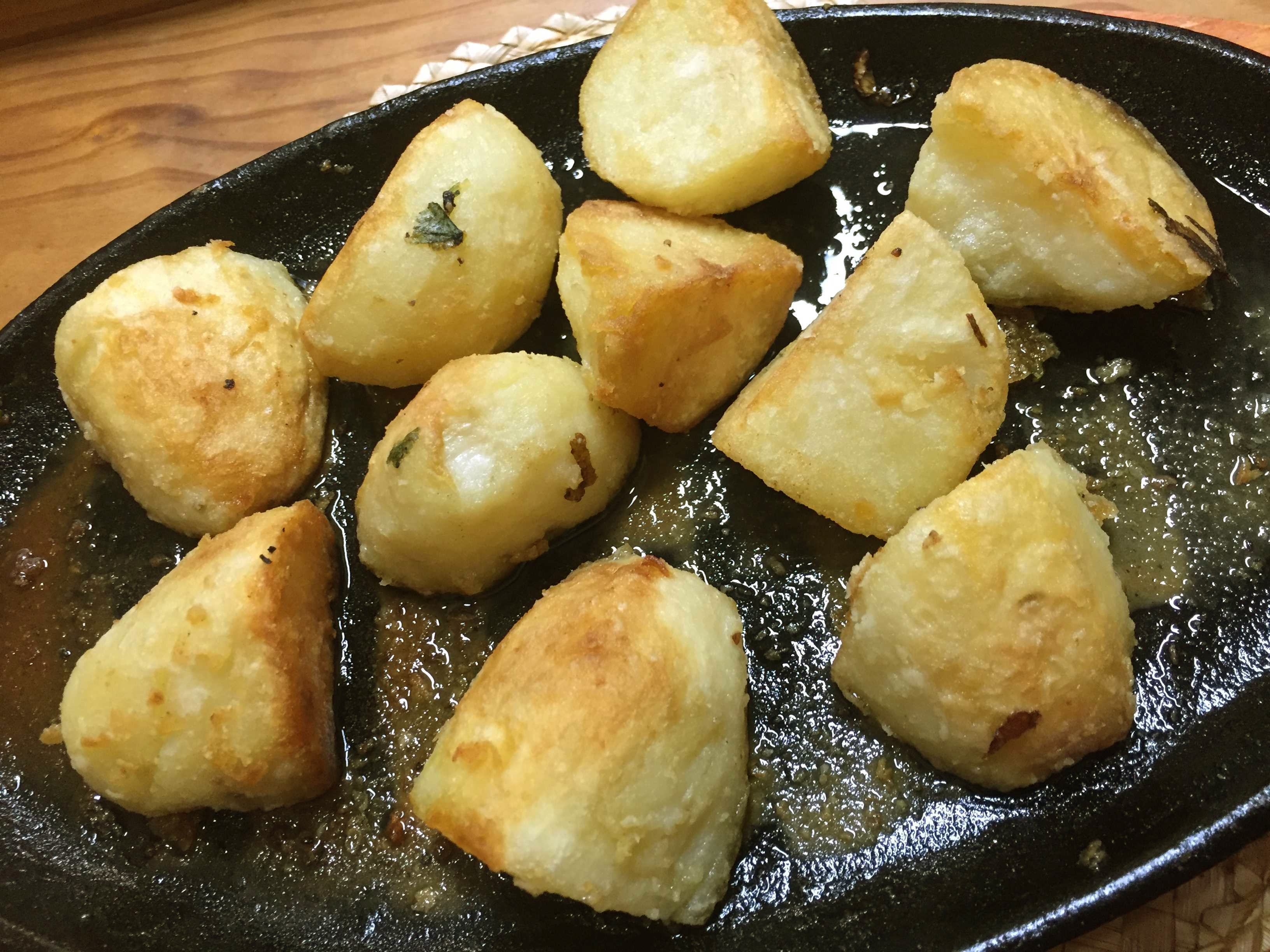Continued from Europe 2016 – Part 2.
What is the best way to roast potatoes?
This is not the question we expected to be asking ourselves while spending a week in Chamonix, right under Mont Blanc. However, after a day of walking in the Alps, the four of us agreed that dinner that night would be a case of what was on hand in our apartment. That would lead to a more than presentable ‘home cooked’ dinner!
Chamonix as a gourmet destination
We were surprised to find Chamonix was quite upmarket, with smart shops, restaurants and food outlets. It is in the Savoie region of France, known for its cheeses (for example, beaufort and reblochon), and for its distinctive wines and charcuterie (delicatessen) products.
Savoie also has several distinctive regional dishes with fondue and raclette the two most prominent. The tartiflette was a new dish for us. Based around a mix of potatoes, bacon and onion, under a grilled topping of reblochon, it is rich but delicious. Another dish in the same category is the savoie croute alpine. The extraordinary version we tried was a large slice of grilled bread topped with a mixture of four alpine cheeses, grilled, then topped with a creamy saute of girolles (mushrooms). A dish we heard about but didn’t get to try was an onion and wine stew of local sausages called diots.
An alpine dinner: Chicken in vinegar, baby green beans, roasted fluffy potatoes
At the beginning of our week we had stocked up on basics and towards the end we still had bottles of olive oil and red wine vinegar that were almost full, plus plenty of garlic and other ingredients. The question was how to use them up without having to buy too many extra ingredients.
Chicken in vinegar
We discovered this recipe: Farmhouse Chicken in Vinegar Sauce. We followed it as closely as we could, given our limited ingredients. Note the following changes we made:
- we used olive oil, not canola
- a whole sliced leek, not shallots
- red wine vinegar instead of cider vinegar
- four chopped tomatoes instead of tomato paste and stock
- we added 200 g chopped smokey bacon which we fried after removing the chicken and before adding the garlic and leeks (shallots)
For our recipe, click here: Chicken in Vinegar
Blanched green beans
The beans were about 10 centimetres long and a few millimetres thick. We ‘cooked’ them by blanching them twice in boiling water.
Roasted fluffy potatoes
Several times at home we had tried the method of boiling potatoes before roasting them but were beginning to wonder it it was worth the effort, concluding that mashed potatoes would be more satisfying. Eventually we struck on a roasting method that is relatively fuss free and gives excellent results.
Our technique is based on these three methods, with the main exception being that we microwave the potatoes rather than boil them:
- Adam Liaw. See step 2. Note the oil pre-heated in the baking dish.
- Heston Blumenthal. See note 9 about adding crushed garlic cloves and rosemary towards the end.
- BBC Good Food. Note the oil pre-heated in the baking dish and the use of flour.
Use these as a guide if you wish. However, our method, which cuts back on the time noticeably but still gives a great result, is as follows (with an update from a friend):
- Allow 30 to 40 minutes in total before serving. Use a large baking dish so that the potatoes have some space around them. Make plenty as they will be eaten for sure.
- Ingredients:
– 1 kg potatoes (sebago work well)
– 100 to 150 ml olive oil
– 1 tbsp plain flour
– garlic cloves (optional)
– rosemary sprigs (optional)
– salt flakes - Turn your oven to 220oC fan-forced. Place your baking dish in the oven at the same time.
- Peel the potatoes and cut into chunks. Pat them dry if they are wet.
- When peeled add the oil to the baking pan and return to the oven. Caution: the pan and the oil will get very hot!
- Microwave the potatoes and turn around once or twice to heat them through more evenly. Give them several minutes in the microwave at most: the potatoes don’t need to be cooked, just heated through and softened a little.
- Shake the potatoes in a container with a lid or use a fork to rough up the edges a little.
- Sprinkle over the flour in stages to coat the hot potatoes.
- Very carefully, because of the hot oil, add the potatoes to the baking dish. Turn each carefully to coat with some oil. Ensure they are not crowded or on top of each other. Return to the hot oven.
- Turn the potatoes after 10 minutes and then again 10 minutes later. The potatoes should start to colour and crisp up.
- After 20 minutes or so in the oven, add as much in the way of crushed garlic cloves and rosemary as you wish. Turn the potatoes again. Return to the oven until they are coloured and crisped up and soft inside.
Update: A friend adds a dash or two of turmeric to the flour as this will help colour the potatoes. On a number of occasions, such as Christmas dinner, they have also prepared the potatoes some hours ahead or the day before: to do this, bake the potatoes for about 15 minutes, turning a few times to just crisp; remove from the oven and allow to cool on the bench; when totally cooled cover with plastic wrap but do not refrigerate, to avoid condensation that will affect the crispiness of the potatoes; reheat in the oven for 10 to 15 minutes when required.
Equipment: A large baking dish.
Difficulty: 3/5, Moderately Difficult. 10 minutes preparation. 30 to 40 minutes cooking.
Serve: Serve immediately, scattered with salt flakes.
They were a great match for the chicken because of its sauce. We had cooked over a kilogram of potatoes and all were eaten!
We have found the method is quite resilient to variation. The photo below is where we used duck fat and some duck skin along with some oil. (Thus, if you have been cooking duck and have trimmed off some fat or skin, render it a little first. No need to add oil if there is plenty of fat rendered.) The photo after that is of potatoes cooked on a lidded barbecue using a steak sizzler as a hot plate.
Continued in Europe 2016 – Part 4.








